- Home
- Patricia Cornwell
Trace Page 29
Trace Read online
Page 29
“How have you been doing, Junius?” she asks. “Understand you and Marino have been keeping the lights burning late at the FOP. I hope you aren’t stressing yourself out too much about this recent trace evidence curiosity. If anyone can figure it out, you can.”
Eise glances at her, a look of disbelief on his face. “Let’s hope so,” he says, flustered. “Well, I have to say, I know I didn’t mix anything up. I don’t care what anyone says. I damn well know I didn’t.”
“You’re the last person who would mix something up,” she says.
“Well, thank you. That means a lot coming from you.” He lifts the swipe card from the lanyard around his neck and waves it past the sensor on the wall, and a lock clicks free. He opens the door. “It’s not for me to say what anything means,” he adds as they walk into the Trace Evidence section. “But I know I didn’t mislabel a sample. I never have. Not once. At least not once when I didn’t catch it right away and the courts were none the wiser.”
“I understand.”
“Do you remember Kit?” Eise asks, as if Kit is nearby, but she isn’t in sight. “She’s not here, is out sick, as a matter of fact. I tell you, half the world has the flu. But I know she wanted to say hello. She’ll be sorry she missed you.”
“Tell her I’m sorry too,” Scarpetta says as they reach a long black countertop in Eise’s work area.
“Tell you what,” Marino says. “You got a quiet place with a phone?”
“You bet. The section chief’s office around the corner. She’s in court today. Help yourself, I know she wouldn’t mind.”
“I’ll leave you guys to play in the mud,” Marino says, walking off slowly, slightly bowlegged, like a cowboy who just came in from a long, rough ride.
Eise covers a section of countertop with clean white paper and Scarpetta opens her black bag and pulls out the soil samples. He pulls up another chair so she can sit next to him at the compound microscope and hands her a pair of examination gloves. The first stage of the many in this process is the simplest. Eise takes a tiny steel spatula, dips it into one of the bags, wipes a minute residue of red clay and sandy dirt on a clean slide, and places it on the stage of the microscope. Peering into the lenses, he adjusts the focus and slowly moves the slide around while Scarpetta looks on, unable to see anything except the swipe of damp reddish dirt on the glass. Removing the slide and setting it on a white paper towel, he uses the same method to prepare several more slides.
It is not until they are working on a second bag of the soil Scarpetta collected from the demolition site that Eise finds something.
“If I wasn’t seeing this, I wouldn’t believe it,” he says, looking up from the binocular eyepiece. “Help yourself.” He rolls back his chair, giving her room.
She moves closer to the microscope and looks through the lenses at a microscopic landfill of sand and other minerals, fragments of plant and insect pieces, and parts and bits of tobacco—all typical for a dirty parking lot—and she sees several flecks of metal that are partially a dull silver. This is not typical. She looks for a needle-pointed tool and finds several within reach. She carefully manipulates the metallic chips, isolating them, and sees that there are exactly three of them on this slide, all slightly bigger than the largest grain of silica or rock or other debris. Two are red and one is white. Moving the tungsten tip around a little more, she unearths one more find that captivates her interest. This one she recognizes quickly, but she takes her time saying so. She wants to be sure.
It is about the size of the smallest paint chip and grayish-yellow and a peculiar shape that is neither mineral nor man-made. In fact, the particle looks like a prehistoric bird with a hammer-shaped head, an eye, a narrow neck, and a bulbous body.
“The flat plates of the lamellae. They look like concentric circles and are the layers of bone like the rings of a tree,” she says, moving the particle a little. “And the grooves and channels of the canaliculi. That’s the holes we’re seeing, the haversian canals or canaliculi, where tiny blood vessels run through. You put this under the PolScope and you should see an undulating, wavy fanlike extension. My guess is when you get around to the XRD it’s going to come up as calcium phosphate. Bone dust, in other words. I can’t say I’m surprised, considering the context. That old building certainly would have had plenty of bone dust in it.”
“I’ll be darned,” Eise says happily. “I’ve been making myself crazy over it. The same damn thing I found in the Sick Girl case, the Paulsson case, if we’re on the same sheet of music. Mind if I look?”
She rolls back her chair, relieved but just as perplexed as she was before. Paint chips and bone dust might make sense in the tractor driver’s case, but not in Gilly Paulsson’s death. How can it be that the same type of microscopic trace evidence was recovered from inside her mouth?
“Same damn stuff,” Eise says with certainty. “Let me get Sick Girl’s slides and show you. You won’t believe it.” He picks up a thick envelope from a pile on his desk and peels tape off the flap and pulls out a cardboard file of slides. “Been keeping her stuff handy because I’ve looked at it so many times, believe you me.” He places a slide on the stage. “Red, white, and blue paint particles, some adhering to metal chips, some not.” He moves the slide around and gets it into focus. “Paint’s single-layer, at least an epoxy enamel, and it may have been modified. Meaning, whatever the object is, it might have started out white and had additional paint added, specifically the red, white, and blue added. Take a look.”
Eise has painstakingly removed all particles from whatever was submitted to him in the Paulsson case, and only red, white, and blue paint chips are on the slide. They look big and bright, like a child’s building blocks but irregularly shaped. Some of them adhere to dull silver metal and some seem to be just paint. The color and texture of the paint seem identical to what she just saw when she looked at her soil sample, and her growing disbelief is well on its way to numbness. She can’t think. Her brain is slowing down like a computer running out of memory. She simply can’t find the logical connections.
“Here’s the other particles you’re calling bone dust.” He pulls away the side and replaces it with another one.
“And this was on her swabs?” She wants to make sure because it is hard to believe.
“No question about it. You’re looking at it.”
“The same damn dust.”
“Think how much of that would be down there. More dust than there are stars in the universe if you started scraping up all the dirt down there,” Eise says.
“A few of these particles look like they’re old and the product of natural flaking or exfoliation as the periosteum begins to break down,” Scarpetta says. “See how rounded and gradually thinned the edges are? I expect dust like that with skeletal remains, bones dug up or carried in from the woods and so on. Untraumatized bones will have untraumatized dust. But a few of these”—she isolates a particle of bone dust that is jagged and fractured and several shades lighter in color—“look pulverized to me.”
He leans in to see for himself, and then moves out of her way, and she peers into the lenses.
“In fact, I’m thinking this particle here is burned. Did you notice how fine it is? I’m seeing a little blackish margin. It looks carbonized, burned. Bet if I put my finger on this particle it would probably stick to the oil on my skin, and regular flaked bone won’t,” she says, intrigued. “I think some of what we’re looking at is from cremains.” She peers at the bluish-white ragged particle with its carbonized margin in the bright circle of light. “It looks chalky and fractured but not necessarily heat fractured. I don’t know. I’ve never had a reason to pay attention to bone dust, certainly not burned bone dust. An elemental analysis will tell you. With burned bone you should get different levels of calcium, higher levels of phosphorus,” she explains without moving her eyes from the binocular lenses. “And by the way, I might expect dust from cremains in the rubble and dirt at the old building since there was a crematorium o
ven. God knows how many bodies were cremated in that place over the decades. But I’m a little perplexed that the debris from this soil I brought in would have bone dust in it. I scraped that soil from the pavement near the back door. They haven’t started knocking down the back of the building and digging up the back parking lot yet. The Anatomical Division should still be completely intact. Remember the back door of the old building?”
“Sure I do.”
“That’s where it was. Why would dust from cremains be in the parking lot, right there on top of the parking lot? Unless it was tracked outside the building?”
“You mean someone stepped in it down there in the Anatomical Division and then tracked it out into the parking lot?”
“I don’t know, possibly, but it appears Mr. Whitby’s bloody face must have been against the pavement, the muddy dirty pavement, and this trace evidence adhered to his wound and the blood on his face.”
“Take me back to the part about bone dust getting fractured,” Eise says, mystified. “So you got burned bone and then how does it get fractured if not by heat?”
“As I said, I don’t know for a fact, but dust from cremains mixed in with dirt on pavement and perhaps run over by a tractor and cars and even people stepping on it. Could bone dust exposed to that sort of traffic look traumatized? I just don’t know the answer.”
“But why the hell would there be cremated bone dust in Sick Girl’s case?” Eise asks.
“That’s right.” She tries to clear her head and organize her thoughts. “That’s right. This isn’t from the Whitby case. This burned-looking fractured dust isn’t from his case. I’m looking at her trace.”
“Dust from cremains inside Sick Girl’s mouth? Holy Mother of God! I can’t explain that. Sure as heck can’t. Can you?”
“I don’t have a clue why bone dust has turned up in her case to begin with,” Scarpetta replies. “What else have you found? I understand they brought in a number of things from Gilly Paulsson’s house.”
“Just stuff from her bed. Kit and I were back there in the Scraping Room for ten hours, and then I spend half my life picking out cotton fibers because Dr. Marcus has a thing about cotton swabs. Must have stock in Q-tips,” Eise complains. “Course, DNA had a crack at the linens too.”
“I know about it,” Scarpetta says. “They were looking for respiratory epithelium and found it.”
“We also found hairs, dyed black hairs, on the sheets. I know Kit’s been aggravated over those.”
“Human, I presume. DNA?”
“Yes, human. They’ve been sent to Bode for mito.”
“What about pet hairs? What about canine hair?”
“No,” he says.
“Not from her bed linens or pajamas, not from anything they carried in from her house?”
“No. How about dust from an autopsy saw?” he says, obsessing over the bone dust. “That could be at your old building too.”
“Nothing I’m seeing looks like that.” She sits back in the chair and looks at him. “Dust from a saw would be fine granules mixed with chunks, and you might also find particles of metal from the blade.”
“Okay. Can we talk about something I do know before I rupture something in my head?”
“Please,” she says.
“Thank you, Lord. Now you’re the bone expert, I’ll grant you that.” He returns several slides to Gilly Paulsson’s folder. “But I do know about paint. In both the Sick Girl and the Tractor Man cases, there’s not a sign of top-coat, not a trace of primer, so we know it isn’t automotive. And the bits of metal underneath aren’t attracted to a magnet, so they’re not ferrous. I tried that out day one, and to cut to the chase, we’re talking aluminum.”
“Something aluminum painted with red, white, and blue enamel paint,” Scarpetta thinks out loud. “Mixed with bone dust.”
“I give up,” Eise says.
“For the moment, so do I,” she replies.
“Human bone dust?”
“Unless it’s fresh, we’re not going to know.”
“How fresh is fresh?”
“Several years at most as opposed to decades,” she replies. “We can swab fingerprints and get STR and mito, so it doesn’t take much, assuming the sample isn’t too old or in bad shape. With DNA it’s quality versus quantity, but if I had to bet, I think we’re out of luck. In the first place, with cremains you can forget DNA entirely. As for the unburned bone dust I’m seeing, I don’t know why exactly, but it strikes me as old. It just looks eroded and old. Now, you can send some of this unburned dust off to Bode Laboratories for mito or even let them try STR, but with a sample this small it’s going to be consumed. Do we want it consumed knowing we may not get anything anyway?”
“DNA ain’t my department. If it was, my budget would be a hell of a lot bigger.”
“Well, it’s not my decision anyway,” she says, getting up from the chair. “I suppose if it were, I would vote for preserving the integrity of the evidence in case we need it later. What matters is that bone dust has shown up in two cases that should not be even remotely related.”
“That definitely matters.”
“I’ll let you pass on the happy news to Dr. Marcus,” she says.
“He loves my e-mails. I’ll send him another one,” Eise replies. “Wish I had happy news for you, Dr. Scarpetta. But the fact is, all these bags of dirt are going to take me a while. Days. I’ll spread all of it out on watch glasses, dry it good, then sieve it to separate the particles, and that’s a pain in the neck because you have to bang the damn sieves on the counter every other minute to get them to drain into the receiver pan, and I’ve given up begging for particle separators that have automatic shakers because they can cost up to six grand, so forgetez-vous that. The drying and the sieving will take a few days, then it’s just me, myself, and I and the microscope, and then SEM and whatever else we try. By the way, did I ever give you one of my hand-made tools? Around here, they’re affectionately known as ‘Eise Picks.’”
He finds several on his desk and decides on one, turning it slowly this way and that to make sure the tungsten isn’t bent and doesn’t need sharpening. Holding it up proudly, he presents it to her with a flourish as if he is giving her a long-stem rose.
“That’s very nice of you, Junius,” she says. “Thank you very much. And no. You never did give me one.”
40.
UNABLE TO LOOK at the problem from any angle that introduces clarity, Scarpetta stops thinking about the painted aluminum and bone dust. She decides she will soon drive herself into complete exhaustion if she continues to obsess about red, white, and blue chips of paint and particles of probable human bone that are smaller than cat dander.
The early afternoon is gray and the air is so heavy it threatens to collapse like a rain-soaked ceiling. She and Marino get out of the SUV and the doors sound muffled when they close them. She begins to lose faith when she sees no lights on in the brick house with the mossy slate roof that is on the other side of the Paulssons’ backyard fence.
“You sure he’ll be here?” Scarpetta asks.
“He said he would. I know where the key is. He told me, so obviously he doesn’t care if we know.”
“We’re not going to break in, if that’s what you’re suggesting,” she says, looking down the cracked walkway to the aluminum storm door and the wooden door behind it and the dark windows on either side. The house is small and old and has the sad face of neglect. It is overwhelmed by bold magnolias, prickly shrubs that haven’t been pruned in years, and pines that are so tall and full of themselves they have littered their needles and cones in layers that clog gutters and smother what is left of the lawn.
“Wasn’t suggesting nothing,” Marino replies, looking up and down the quiet street. “Just letting you know he told me where the key is and said there’s no alarm system. You tell me why he told me that.”
“It doesn’t matter,” she says, but she knows it does. Already she can see what is in store for them.
Th
e real-estate agent can’t be bothered to show up or doesn’t want to be involved, so he has made it possible for them to wander in and around the house unattended. She digs her hands in the pockets of her coat, her scene kit over her shoulder and noticeably lighter without the bags of soil that are now being dried at the trace evidence lab.
“I’m at least looking in the windows.” He starts off down the walkway, moving slowly, legs spread a little wide, watching where he steps. “You coming or hanging out by the car?” he asks without turning around.
What little they know began with the city directory, which was enough for Marino to track down the real-estate agent, who apparently hasn’t shown the house in more than a year and doesn’t give a damn about it. The owner is a woman named Bernice Towle. She lives in South Carolina and refuses to spend a penny to fix up the place or lower the price enough to make its sale remotely possible. According to the real-estate agent, the only time the house is used is when Mrs. Towle lets guests stay in it, and no one knows how often that is—or if they ever do. The Richmond police did not check out the house or its history because for all practical purposes it is not lived in and therefore not relevant to the Gilly Paulsson case. The FBI has no interest in the dilapidated Towle residence for the same reason. Marino and Scarpetta are interested in the house because in a violent death everything should be of interest.
Scarpetta walks toward the house. The concrete beneath her feet is slick with a film of green slime from the rain, and were it her walkway she would scrub it with bleach, she thinks as she gets closer to Marino. He is on the small, sloping porch, hands cupped around his eyes, peering through a window.
“If we’re going to be prowlers we may as well commit the next crime,” she says. “Where’s the key?”

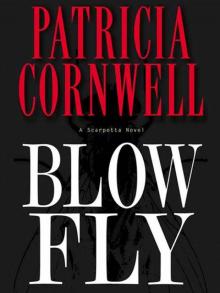 Blow Fly
Blow Fly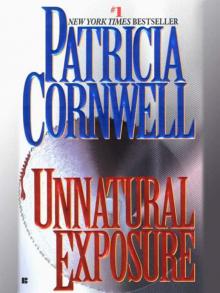 Unnatural Exposure
Unnatural Exposure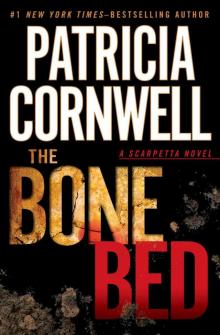 The Bone Bed
The Bone Bed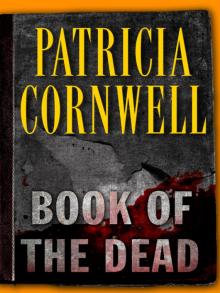 Book of the Dead
Book of the Dead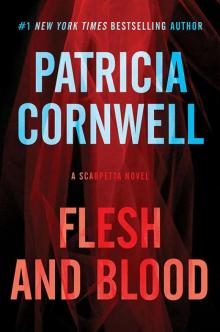 Flesh and Blood: A Scarpetta Novel (Scarpetta Novels Book 22)
Flesh and Blood: A Scarpetta Novel (Scarpetta Novels Book 22)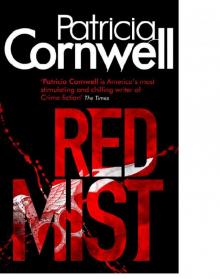 Red Mist
Red Mist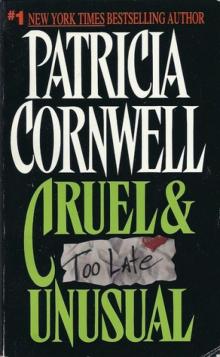 Cruel & Unusual
Cruel & Unusual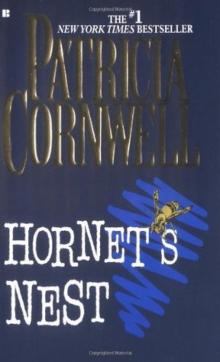 Hornet's Nest
Hornet's Nest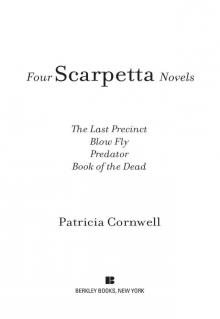 Four Scarpetta Novels
Four Scarpetta Novels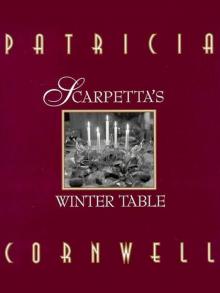 Scarpetta's Winter Table
Scarpetta's Winter Table Isle of Dogs
Isle of Dogs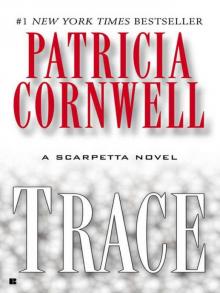 Trace
Trace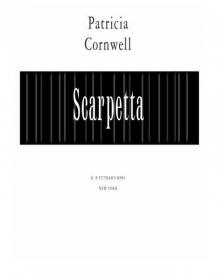 Postmortem
Postmortem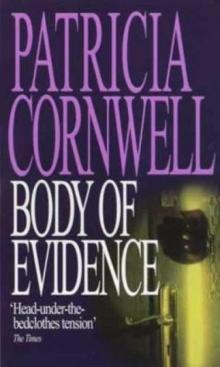 Body of Evidence ks-2
Body of Evidence ks-2 Southern Cross
Southern Cross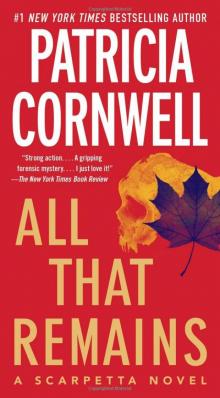 All That Remains
All That Remains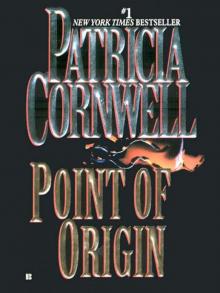 Point of Origin
Point of Origin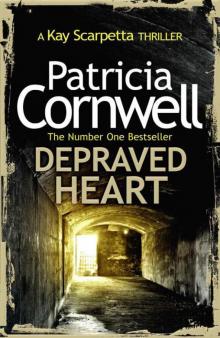 Depraved Heart
Depraved Heart Ruth, a Portrait: The Story of Ruth Bell Graham
Ruth, a Portrait: The Story of Ruth Bell Graham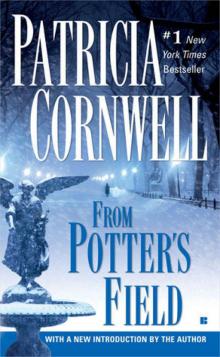 From Potter's Field
From Potter's Field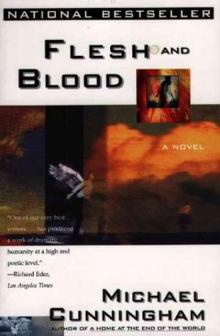 Flesh and Blood
Flesh and Blood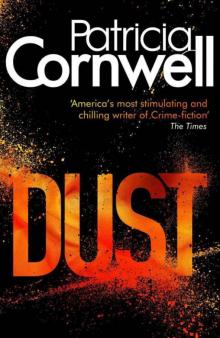 Dust
Dust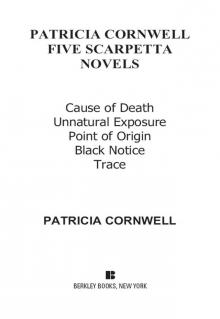 The Body Farm
The Body Farm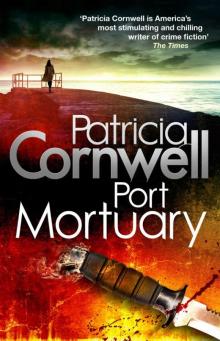 Port Mortuary
Port Mortuary Quantum
Quantum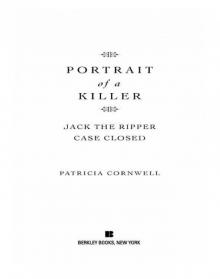 Portrait of a Killer: Jack the Ripper - Case Closed
Portrait of a Killer: Jack the Ripper - Case Closed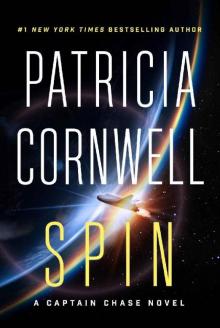 Spin (Captain Chase)
Spin (Captain Chase)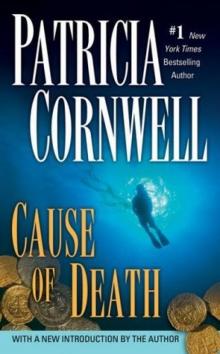 Cause of Death
Cause of Death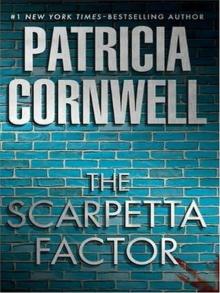 The Scarpetta Factor
The Scarpetta Factor Predator
Predator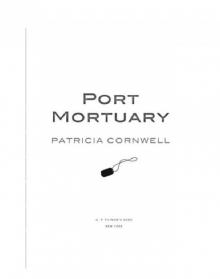 Scarpetta 18 - Port Mortuary
Scarpetta 18 - Port Mortuary Trace ks-13
Trace ks-13 Portrait of a Killer
Portrait of a Killer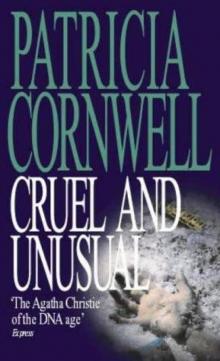 Cruel and Unusual ks-4
Cruel and Unusual ks-4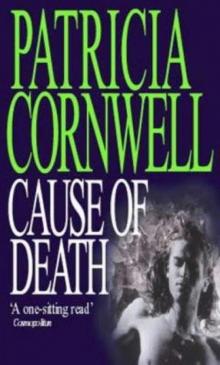 Cause Of Death ks-7
Cause Of Death ks-7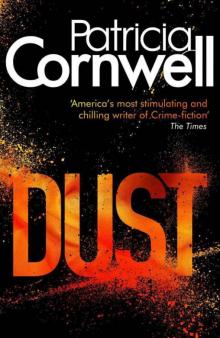 Dust ks-21
Dust ks-21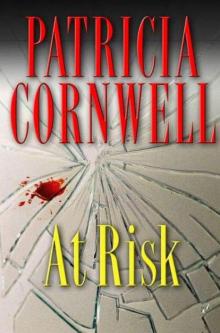 At Risk wg-1
At Risk wg-1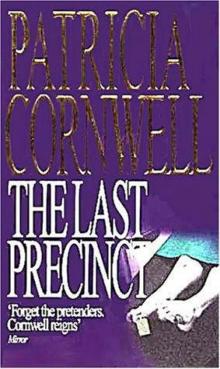 The Last Precinct ks-11
The Last Precinct ks-11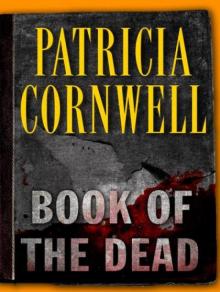 Book of the Dead ks-15
Book of the Dead ks-15 All That Remains ks-3
All That Remains ks-3 Ruth, a Portrait
Ruth, a Portrait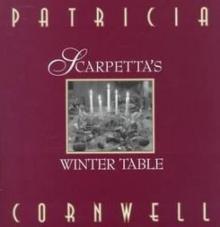 Scarpetta's Winter Table (kay scarpetta)
Scarpetta's Winter Table (kay scarpetta)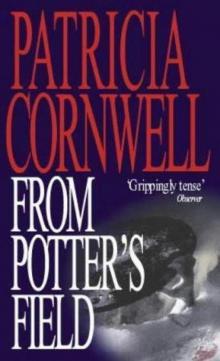 From Potter's Field ks-6
From Potter's Field ks-6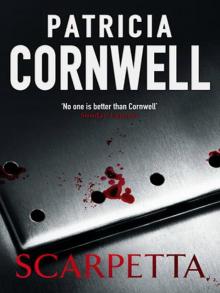 Scarpetta
Scarpetta Isle of Dogs jhabavw-3
Isle of Dogs jhabavw-3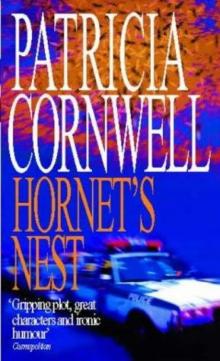 Hornet's Nest jhabavw-1
Hornet's Nest jhabavw-1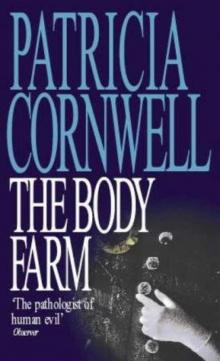 The Body Farm ks-5
The Body Farm ks-5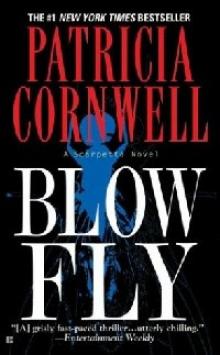 Blow Fly ks-12
Blow Fly ks-12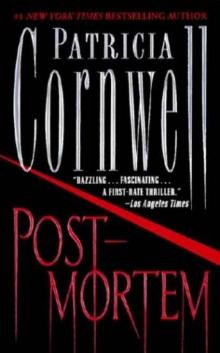 Post Mortem
Post Mortem Five Scarpetta Novels
Five Scarpetta Novels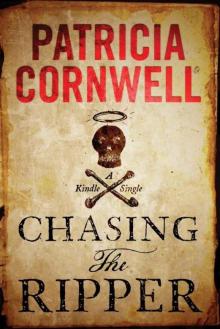 Chasing the Ripper (Kindle Single)
Chasing the Ripper (Kindle Single)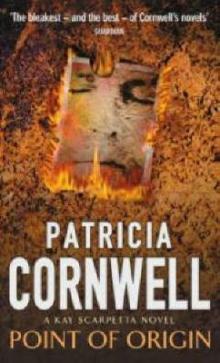 Point of Origin ks-9
Point of Origin ks-9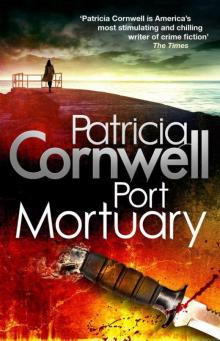 Port Mortuary (2010)
Port Mortuary (2010)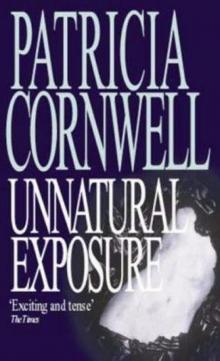 Unnatural Exposure ks-8
Unnatural Exposure ks-8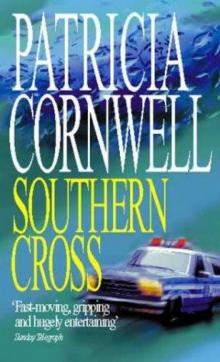 Southern Cross uhabavw-2
Southern Cross uhabavw-2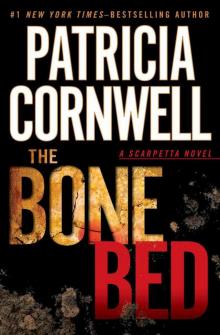 The Bone Bed ks-20
The Bone Bed ks-20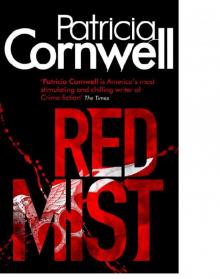 Red Mist ks-19
Red Mist ks-19 Port Mortuary (2010) ks-18
Port Mortuary (2010) ks-18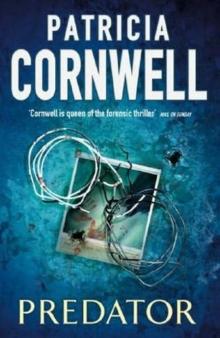 Predator ks-14
Predator ks-14